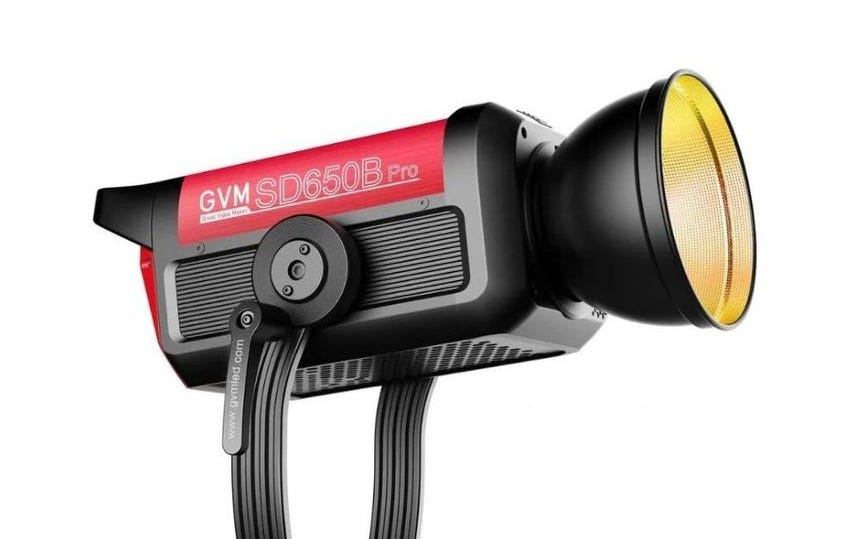Here are some "advanced" things you can do to reproduce the sun even more closely. They have more tradeoffs, though, and cost a lot more money. This is a follow-up article to this one:
Changing color temperature throughout the day

The sun throughout the day is not one color temperature. It starts at 2000K at sunrise, is about 6500K at its peak, and goes back to 2000K at sunset. Depending on the weather, such as cloudy days, it can get up to 8000K or 10000K. You can get bicolor lights and manually reproduce this effect, which usually ranges from 2600-6000K. I've felt the mismatch a bit near the end of the day when the sunlight is about 3000K vs. the 5600K my current lights are locked at.
Bicolor lights are more expensive, have a slightly higher chance of flickering, and have 20% less total light output than the equivalent daylight version for Amaran. You could solve this with a higher-power-rating bicolor light, but it can be difficult to find 85+ SSI bicolor lights beyond 200W. Power consumption will be nearly equal for the same amount of lumens generated, so it won't necessarily up your power bill.
Also, I don't know of any automation for movie lights that would eventually migrate color temperature through the day. You can set up 'scenes' with your light's app and readjust the color temperature throughout the day by activating those scenes. There is a trade-off of how fine-grained you'd want to get with this. I think two or three scenes would probably be best.
The sun also moves throughout the day, and you can reproduce this effect by moving your spotlight through the day. I don't do this myself, though.
LCD HDR Monitors
LCD HDR monitors can be significantly brighter than normal monitors and reproduce a wider color spectrum. Their maximum brightness is denoted by their DisplayHDR rating. I have a DisplayHDR 1000 monitor, for example (the $800 Innocn 32M2V), and the XDR monitors on MacBook Pro laptops are also HDR monitors.
You could use them to look at a much brighter screen and have the color spectrum from the monitor match the outdoors better. Outdoor scenes in Baldur’s Gate 3 are a great demonstration of this. OLED HDR monitors do not get bright enough for this effect, usually maxing out at 400 at most, and they will burn out faster at maximum brightness.
If your monitors get washed out with your new lighting setup, you might find HDR monitors to be the solution for you. I haven't figured out yet how to hack them to force HDR levels of brightness for normal work since mine don't get washed out enough. For the XDR monitors in macOS, however, there are apps like BrighIntosh that let you go beyond the normal SDR limits.
I think that as HDR becomes more popular, it will start inducing more insomnia in the population, especially if they watch shows set in the bright outdoors. The better color spectrums and brightness will tell the brain it's daytime even more.
Truly matching outdoor brightness
You can get a cheap lux meter from Aliexpress or similar and start measuring how much more light you need in your space. Often, you can up the brightness by removing dark surfaces, which increases the amount of reflected light, or get more powerful light to further improve overall brightness. When I got a light meter recently, this is how my current 100d + 200d Amaran setup rated compared to a bright blue sky day:
Lux meter came in, my 200W LED lamp setup is equivalent to being outside in a shaded place lux wise now.
Inside:
8k lux sensor pointed at lamp
1.6k-1k lux pointed at desk
700 ‘scene’ pointed at what I look at
No 200W lamp: 67-200 lux, dim as fuck!
1 100W bounce: 150-380 lux
Outside:
180k lux straight at the sun
16k-11k sunny concrete (whiter = brighter)
1.4k-600 shaded concrete
4k sunny astrotruf grass
1.4k-400 shaded astroturf
General ‘scene’ with sun behind: 9.5k
Pointing both 100W & 200W lamps on my desk and bringing them closer leads to 5k lux on the desk and 1.8k lux on my general 'scene', but I can see the lamps in my peripheral vision and it overwhelms my monitors at this point, it's almost too bright to look at. https://x.com/meta_boli/status/1828559244582625742
Going beyond 200W lights
The 200W light setup I recommend does not match the full brightness of outdoor sunlight. You'll probably need 400W to 600W to reproduce the same light level fully. I myself have not gone beyond 1 200W spotlight and a 100W fill light.
At the +300W range, you start getting into much higher price increases. You also risk tripping your circuit breakers and really upping your power bill. If you pay for electric heating, high-power lights can be substituted with low-grade continuous electric heaters for your room. It's also difficult to find a light beyond 200W that has an SSI D55 above 80; most of them are in the mid-70s. But if you want the full brightness effect and don't care about color quality as much, then they are definitely a good option and will have better color than any "lightbulb" you could buy. The GVM Pro lights are fairly affordable in this space, but I haven't used or tested them yet.
You also might need an HDR monitor that won’t get washed out by your high-power light at these brightness levels. Make sure you get an LCD one with a high DisplayHDR number.






